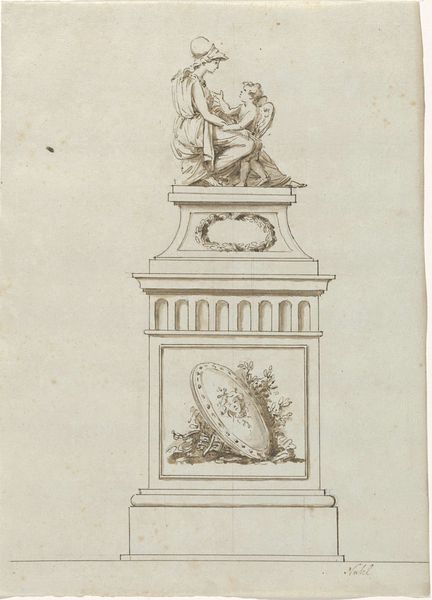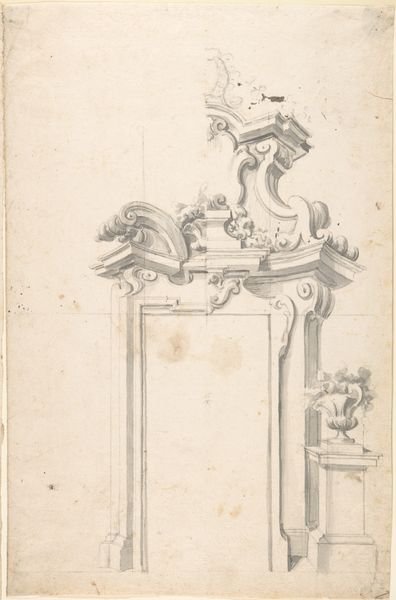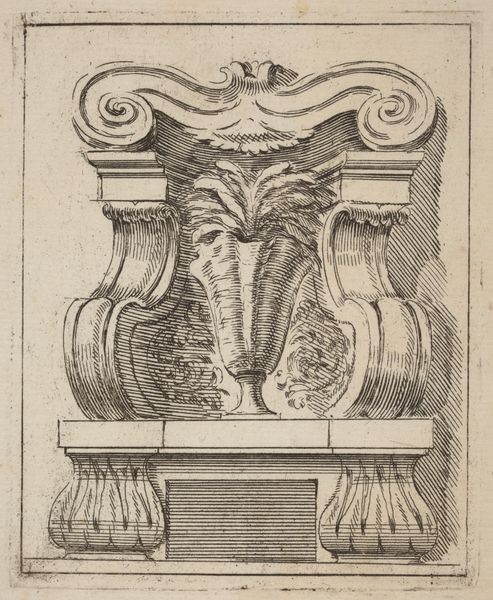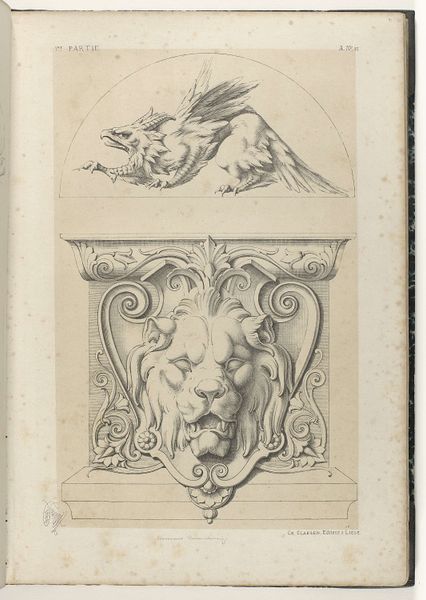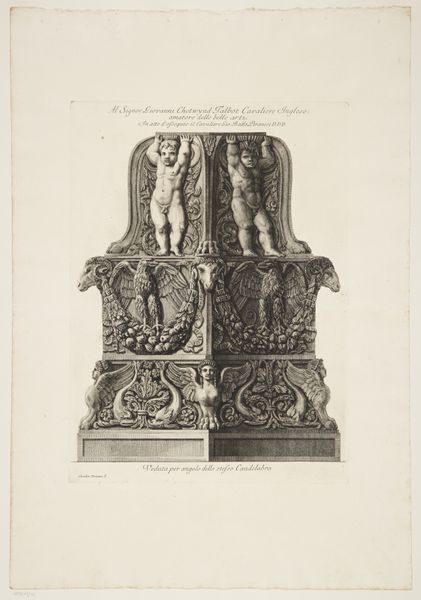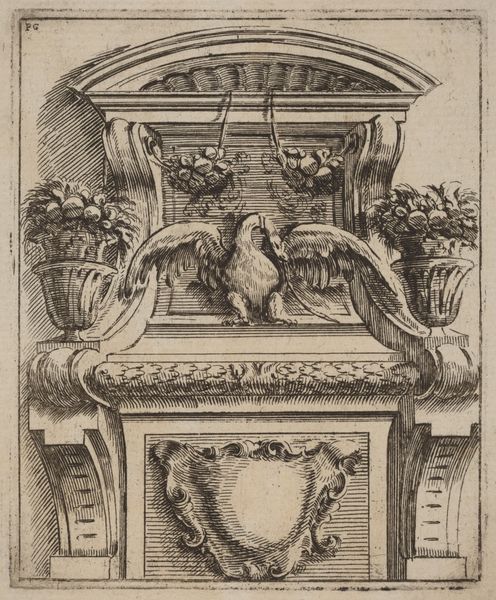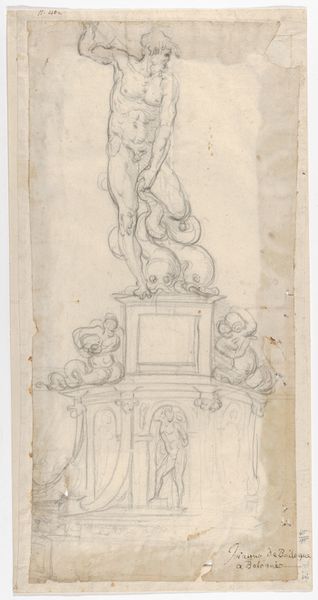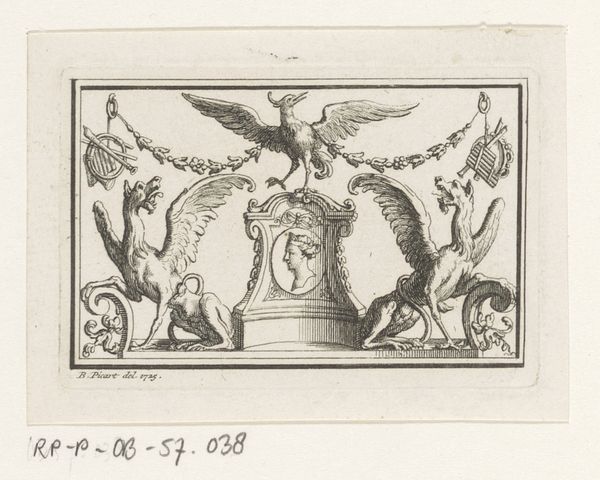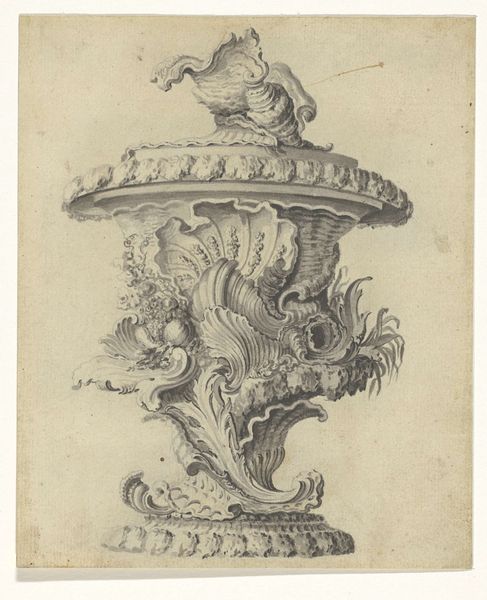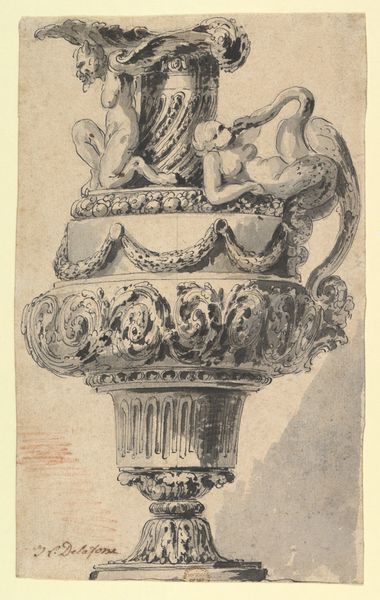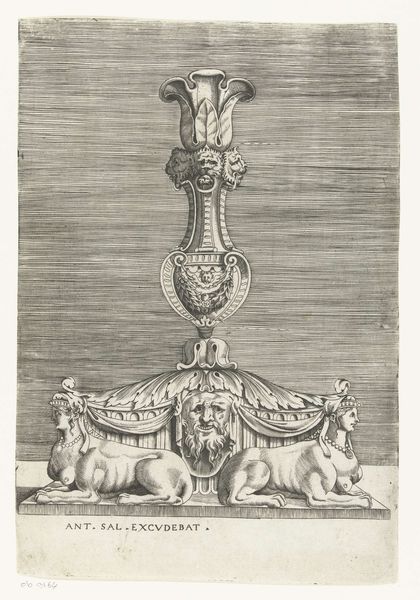
Sketch of a Classical Pedestal with Griffins 1776 - 1779
0:00
0:00
drawing, pencil
#
drawing
#
form
#
geometric
#
classicism
#
ancient-mediterranean
#
pencil
Dimensions: sheet: 9 3/4 x 8 1/16 in. (24.8 x 20.5 cm)
Copyright: Public Domain
Curator: We're looking at a drawing here, “Sketch of a Classical Pedestal with Griffins” by Thomas Hardwick, created between 1776 and 1779. It's currently held at the Metropolitan Museum of Art. Editor: It has a very neoclassical feel. Austere, formal, the kind of precise rendering that suggests an architect’s study. Though, the griffins definitely give it an unexpectedly mythical quality. Curator: Absolutely. Hardwick was, in fact, an architect. The drawing demonstrates his engagement with classical forms and motifs, aligning with the 18th-century fascination with antiquity. He’s capturing more than just form. Editor: And I wonder what kind of pencil or graphite he employed to get that range of tones. Look at how he uses hatching to define the muscles of those griffins and the subtle shadow work that grounds the pedestal. It suggests the careful consideration of stone carving in the final material form. Curator: It's also fascinating how these architectural drawings circulated. Think about the role they played in shaping the built environment. Designs were disseminated influencing tastes and construction practices across vast networks. The role of such drawings also provided professional mobility and elevated the status of architecture itself. Editor: Precisely. The drawing bridges the gap between design and the realization of an object, and underscores that process isn't solely artistic. The choice of classical motifs signals more than aesthetic appeal, too. Griffins traditionally are seen as guardians. Curator: And placing them on a pedestal like this further enhances their symbolic weight, creating a literal foundation that embodies strength and protection, reflecting, perhaps, desired virtues of the elite patrons and institutions who would commission such pieces. It is about control. Editor: Thinking about the drawing as a tangible artifact, I’m curious how Hardwick and his studio members saw it. As a valuable pattern? A preparatory study? Did it hang on a wall as a point of pride? Curator: Good questions. I see the piece as more than simply a design study. This drawing encapsulates the cultural aspirations and social structures of its time. The sketch has been charged through historical placement and the public roles this art could shape. Editor: The way he captured light reminds us that materiality dictates how it would reflect off the pedestal itself, too. The light almost completes it. Curator: Yes. It reminds me to rethink the artistic labor required in those times, and now in ours. Editor: Indeed, a nice lens through which to observe classical conventions.
Comments
No comments
Be the first to comment and join the conversation on the ultimate creative platform.

